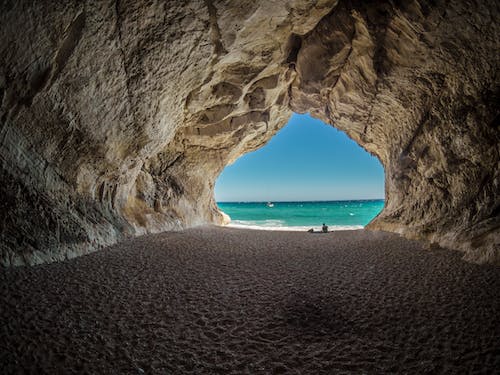Christianity has a long history of constructing temples in caves. Cave churches are the most successful expression of sacred architecture that seeks to blend into nature. Here are seven famous European cave churches.
Cave Church, Hungary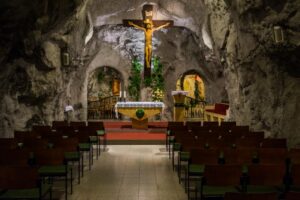
The church of the cave, or ‘Saint-Ivan’s Cave’ (after a hermit who lived there) was founded in 1926 by Pauline monks. This cave church was made taking inspiration from the sanctuary of Lourdes. A refuge during the Second World War, it was closed by the communist regime, to be reopened in 1991. The neo-Romanesque church, visible from the Danube, is an addition dating from 1934.
Orheiul Vechi, Moldavia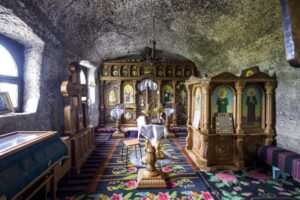
This church’s well-known attraction is the Cave Monastery, a complex of rooms and tunnels dug into a remote, rocky ridge over the Răut River. This cave church resides about 50 km north of Chişinău, Moldova. It is an archaeological and ecclesiastical complex. The UNESCO World Heritage site includes a 1905 Orthodox church dedicated to the Ascension of St Mary as well as ruins from different eras, from the times of the Dacian tribes (2000 years ago) to those of the Mongol and Tatar invasions. The entire site is a hidden pearl of beauty, spirituality and historical relevance that can be visited in half a day.
St. Kinga’s Chapel, Poland
St. Kinga’s Chapel is a UNESCO World Heritage Site. This chapel is located 101 meters underground and is one of the biggest attractions of the Wieliczka Salt Mine. The chapel is an example of a ‘travelling chapel’ whose furniture could be moved by miners to other rooms or cave chambers closer to their workplace. The room in which the chapel was placed dates back to the 19th century. Inside the chapel are two 17th-century wooden baroque saints’ figures.
Church of Piedigrotta, Italy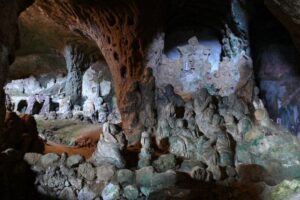
In the 18th century the sailors constructed the church of Piedigrotta in order to house a painting of the Virgin Mary they found on a shipwreck. First a fishermen’s chapel, the cave became a church at the turn of the 19th and 20th centuries. Inside are several groups of sculptures, carved from volcanic tuff.
Pirot Cave Church, Serbia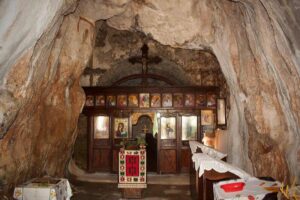
The Cave Church, also known as the Cave Church of Sts. Peter and Paul were built in the 13th century. It might have been built possibly by Orthodox monks returning from the Sinai to Egypt. The particularity of this small church lies in its fresco, also dating from the 13th century: it contains a unique representation of a bald Jesus Christ. The site has been classified as a Serbian national cultural heritage site since 1981.
Sanctuary of Sainte-Baume, France
The sanctuary of Sainte-Baume, also known as the Sainte-Marie-Madeleine cave. It is an important pilgrimage site for the cult of Saint Mary Magdalene, evangelizer of Provence. As early as the 5th century, Saint John Cassian founded the first priory there. Throughout the 14th and 15th centuries, popes, kings, and princes made pilgrimages to the cave sanctuary, one of the most famous in Christianity. A community of four Dominican friars was re-established in the summer of 2002.
Rock-hewn Churches, Bulgaria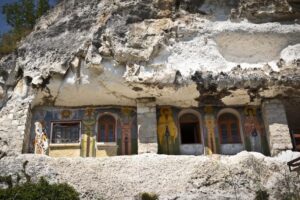
The Rock-hewn Churches of Ivanovo are a complex of small medieval rock churches, chapels, and cells, carved at different heights in the cliffs of the picturesque canyon of the river Rusenski Lom. These caves were dug as hermitages during a period running from the 10th century to the 15th century, turning the river valley and its tributaries into a Bulgarian spiritual center. The Churches of Ivanovo, with their extremely well-preserved murals, are a UNESCO World Heritage Site.



